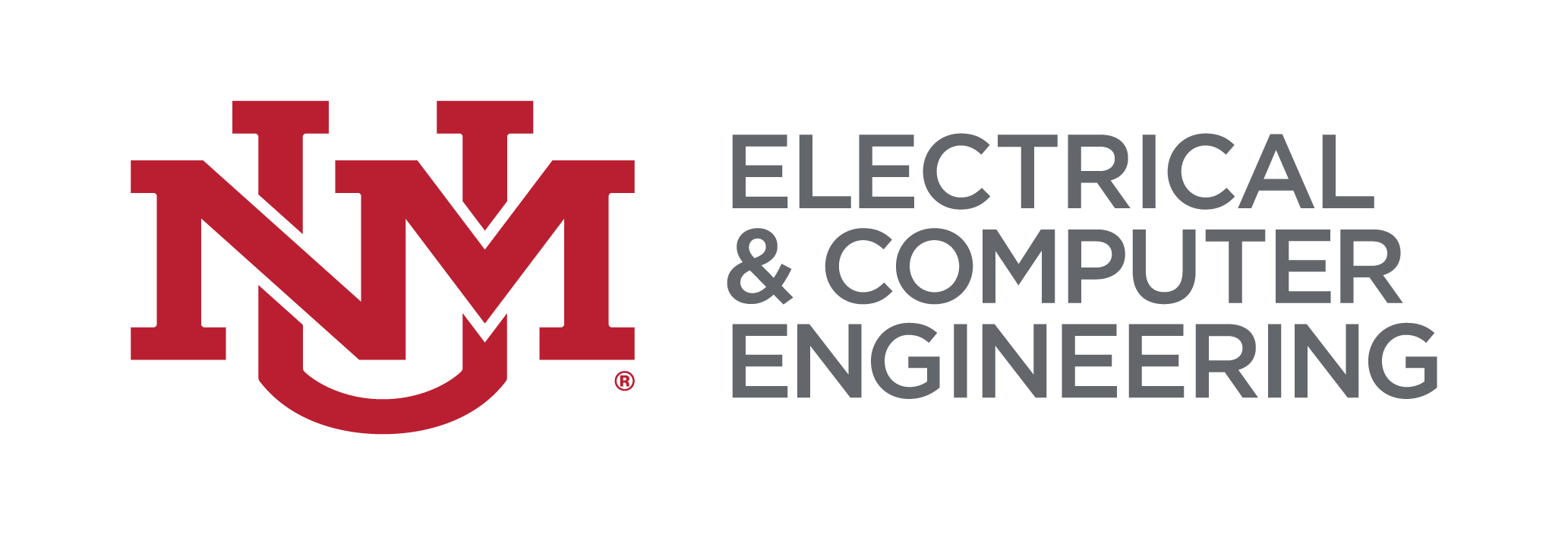Recent News
November 7 seminar: Bradley Ratliff
November 5, 2025
October 31 seminar: Adarsh Venkataramani
October 29, 2025
October 24 seminar: Jon Loftin
October 21, 2025
UNM professor Milad Marvian receives DOE Early Career Research Award
October 17, 2025
News Archives
New MS Archive Located Here!
March 19, 2019
ECE is pleased to introduce this page as an archive for all those Master of Science Students who defended their thesis after August 19, 2019.
Please use the search functions on your computer to locate candidates (Control+F on a PC or Command+F on a Mac)
Gesner Defends MS Mon, Aug 19 at 10am

Mr Ralph Lydon Gesner defended his MS thesis, "Validation of Gaseous Absorption & Cloud Attenuation Models..." Monday (Aug 19) at 10 am in room 310 of the ECE Building.
Dr Christos Christodoulo served as chair of Mr Gesner's defense.
Here is the abstract from Mr Gesner's thesis whose full title is, "Validation of Gaseous Absorption & Cloud Attenuation Models Utilizing a 72 GHz Terrestrial Link:"
Abstract: Interest in the W & V-bands of the radio frequency (RF) spectrum has become steadily more desirable for system designers due to the ever increasing desire for greater communication bandwidths and higher data rates. The 40 GHZ to 110 GHz range that constitutes the W & V-bands provide a unique solution to both of these current demands by providing a bandwidth nearly double that of all current RF frequencies in use. To date, this range has only been used for point to point satellite and short link communications meaning these bands have remained largely unexplored and undeveloped.
To capitalize on the untapped benefits of these bands, research must be conducted into the nature of propagation and the effects the atmosphere imbues upon it in the form of attenuation and depolarization at such frequencies. To conduct this research and model these effects, the W & V-band Terrestrial Link Experiment (WTLE) experiment has been implemented. This experiment consists of two continuous wave beacon lens antennas located on the crest of the Sandia Mountains in Albuquerque, New Mexico. The V-band transmitter operates at a frequency of 72 GHz with a half power beam width (HPBW) of 3 degrees, a directivity of 35 dBi, and an estimated radiated isotropic power of 40 dBm. The Receiver is located 24 km away from the transmitter on the roof of the COSMIAC research center in Albuquerque, NM, and consists of two 0.5 m Cassegrain Reflectors that observe both co- and cross-polarization. In addition to the antennas, disdrometers and weather stations are located at both the receiver and transmitter locations. These stations provide atmospheric and precipitation data.
Using the received power and collected atmospheric data at both locations, the atmospheric properties’ profiles along the radio path are constructed using interpolation and variation statistics between the two sites. With these profiles the attenuation due to dry air gases and the liquid water content through any present cloud can be calculated, and these two parameters allow the absorption of millimeter waves by atmospheric clouds in mountain conditions to be approximated. From the data recorded, the results of the effects clouds have along the propagation path on attenuation will be presented. Using the atmospheric data, a method for calculating the presence of a cloud will be presented and compared with currently utilized methods. From the presence of a cloud, the amount of water within the cloud will be calculated, and the attenuation that water along with atmospheric gases produces will be shown. The results will then be validated against recorded power data.
